In front of Takkoku-no-Iwaya there is a small but lovely pond and garden with water lilies that had just started to open. There is a small temple and bridge, a little reminiscent of Ueno in Tokyo:

The lilies though were absolutely gorgeous:
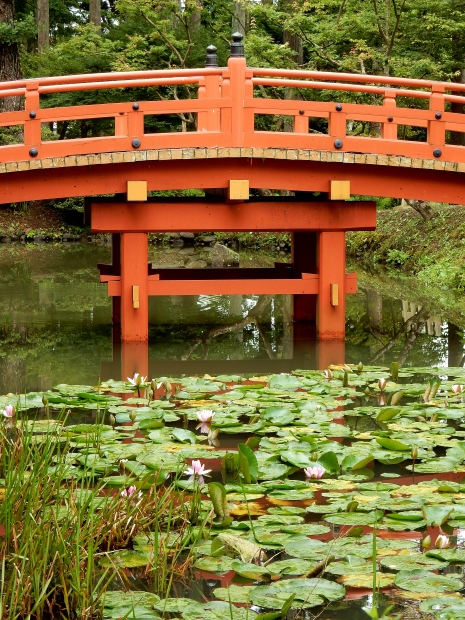

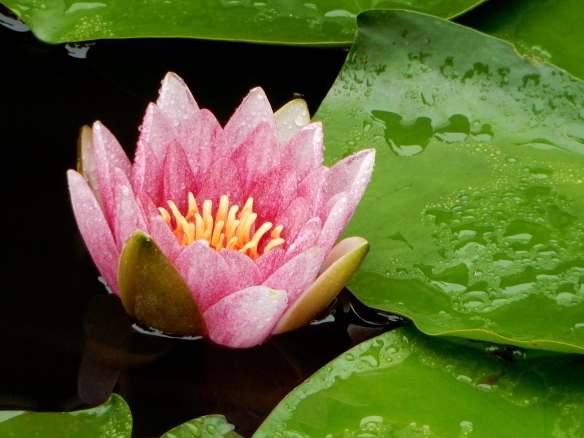


In front of Takkoku-no-Iwaya there is a small but lovely pond and garden with water lilies that had just started to open. There is a small temple and bridge, a little reminiscent of Ueno in Tokyo:

The lilies though were absolutely gorgeous:




Combining a love of ranking things and an historical inferiority complex, the Japanese place inordinate value on UNESCO World Heritage status. So it was in 2011 when the status was conferred upon Hiraizumi, specifically the complex around Chusonji temple, that brought a glint in the eye which may have been pride or promise of gold. Anyway, they all went a little crazy. But Chusonji is not all in Hiraizumi. There are actually a number of attractions in the area that are well worth a visit.
First, we went to Takkoku no Iwaya temple which is built into a rock-face. Actually, no-one really knows what the original temple looked like – founded in 801 it burned down many times – so the current one is pretty much a guess from 1961.
The front entrance:
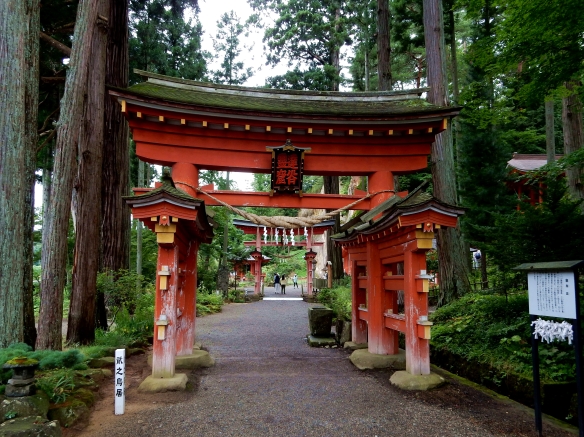

The main temple is based on Kiyomizu-dera in Kyoto and it really is a mini version:

The inside of the temple is carved into the rock-face (ignore the ‘No Photography’ sign):

The temple is in a rural area set among rice paddies:

The rock temple is the show-piece but there are other temples further up the hillside. This is himemachi hudoudo (姫待不動堂):
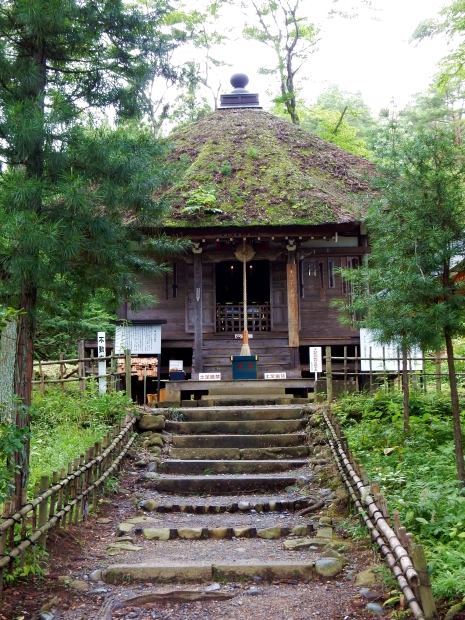

Apparently, it is dedicated to the god of eye diseases. Or a death cult:

It’s a pleasant place nonetheless.
The last stop on the trip was Aizu-Wakamatsu Castle, also known as Tsuruga Castle (鶴ヶ城). The castle, originally built in 1384 and redesigned in 1592, was an important base of power for the whole northern Tohoku region. The castle was damaged in the Boshin civil war in 1868 when the Tokugawa shogunate loyalists attempted to hold out against the new Imperial army. It was finally demolished in 1874. The current buildings are a 1965 concrete replica but they are still pretty impressive.
The main tenshu (keep):

Views from the top:


The main defenses must have been pretty impressive. It was besieged and held out for over a month during the civil war:

Our original plan had been to come for the cherry blossoms which are quite famous for the castle but unfortunately we were just a little bit too late. Perhaps next time:
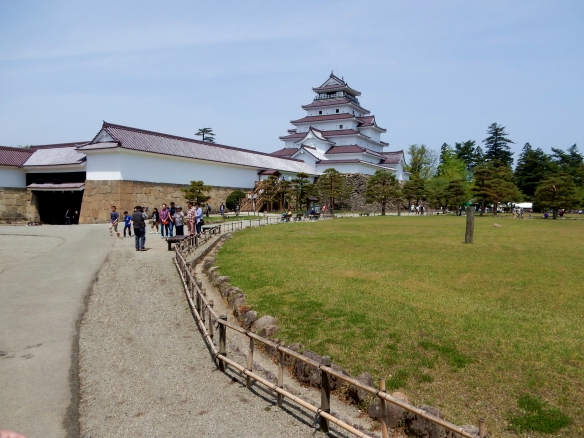

Just outside of Aizu-Wakamatsu is Ouchi-juku, a post town on the former highway between Aizu and Nikko to the north of Tokyo (or Edo as it was then). In order to control the Daimyo lords, the central Shogunate government required then to spend every other year in the capital, Edo. As all travel was done at that time by foot the post towns would have played an important role in breaking up the journey, and providing vital accommodation and supplies. The town has done a wonderful job of preserving the area just as it would have looked at the time by burying all electrical cables and mercifully restricting the use of concrete. As such, there is a long street with splendidly preserved thatch buildings lining each side:




You can really catch glimpses of how the town must have looked like at the time and a lost way of life:
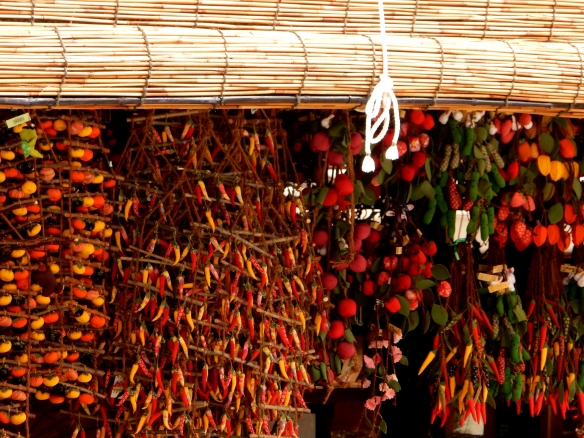


We were lucky to catch the tail end of the cherry blossoms:


It really is a unique step back into the past:
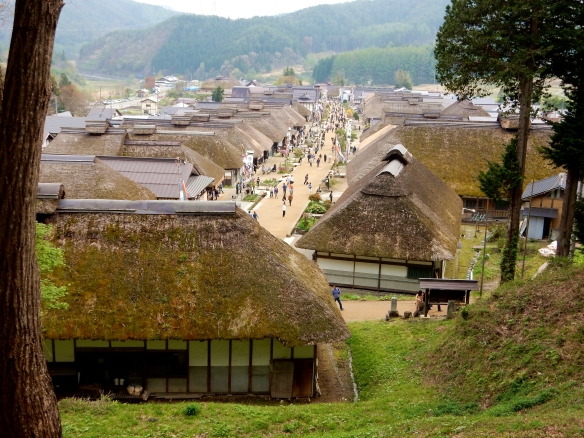
That night we stayed at a small onsen district, which was wonderfully atmospheric if a little run-down (and over-concreted as usual). It was very relaxing though and with a fantastic traditional dinner laid on for us.




Next to the samurai house there was also a preserved, thatched farm house that was a beautiful old building.
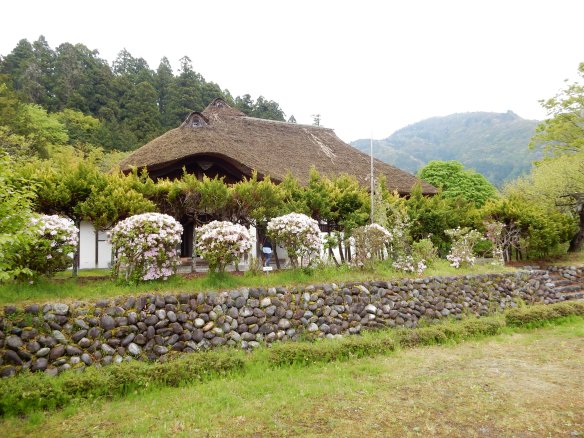
The front of the house:

It’s possible to walk through the house:
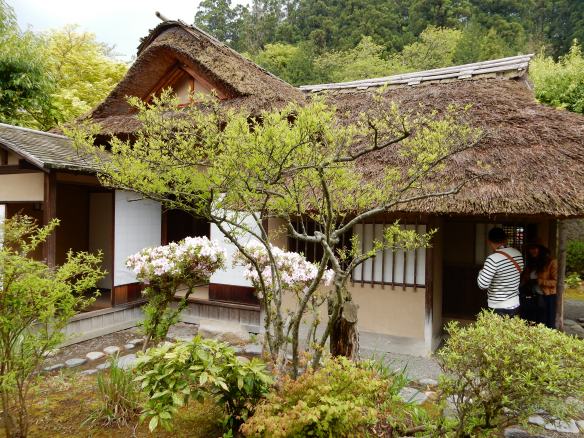

The old wonderfully-preserved thatch:

We went with family up to Aizu-Wakamatsu in Fukushima Prefecture for Golden Week holiday period in May. We wanted to get there for the cherry blossoms but unfortunately we were just a little bit too late. Oh well. Next time. Wakamatsu is a lovely city and the whole area is really nice – this time we rented a car and it really does give a different picture of Japan when you can get away from the usual tourist haunts and explore some different areas which, just because they are not on the main Shinkansen route, tend to get overlooked.
‘Aizu’ is a clan name for the samurai who headed the domain around what is now Fukushima before the Meiji Restoration in 1868, to which they were opposed. We first went to an old samurai house, or bukeyashiki (武家屋敷), which has been preserved and is now a small museum. This is the entrance to the compound:


And to the main house:

And inside there were some (kind of creepy) life-size dolls portraying the samurai family and home life:



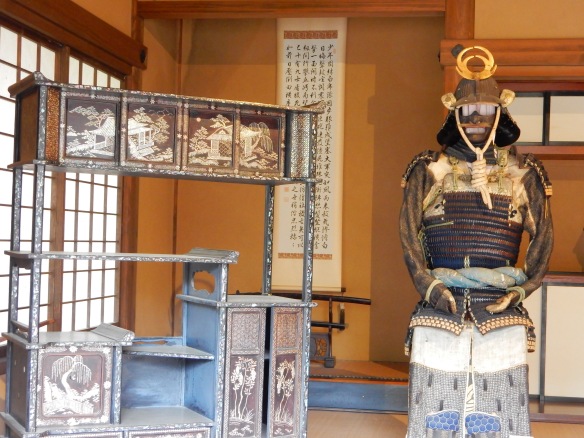
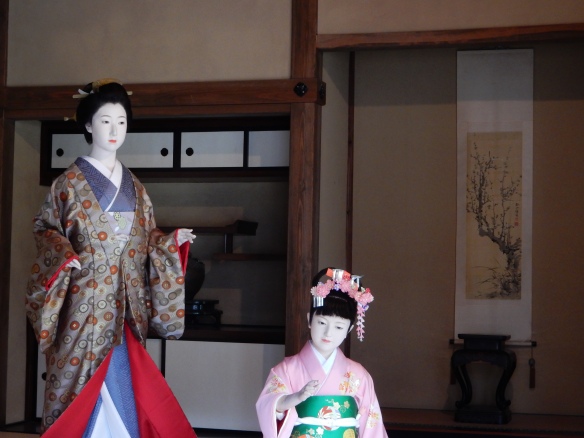
There were also some reminders of spring:


Behind the house was a small family shrine:

Spring Japan is most famous for its cherry blossoms, but there are also several places where Hydrangeas are the feature. This is Meigetsu-in temple in Kita-Kamakura, founded in 1160.
This is the main entrance:

This is a Japanese fruit called a biwa (a type of loquat, I think):

The hydrandreas are mainly blue but there are other colours as well:



The Inner Temple is only open twice a year, this being one of them, but I didn’t queue up for it:

But it’s still nice to wander around all the other temple buildings:

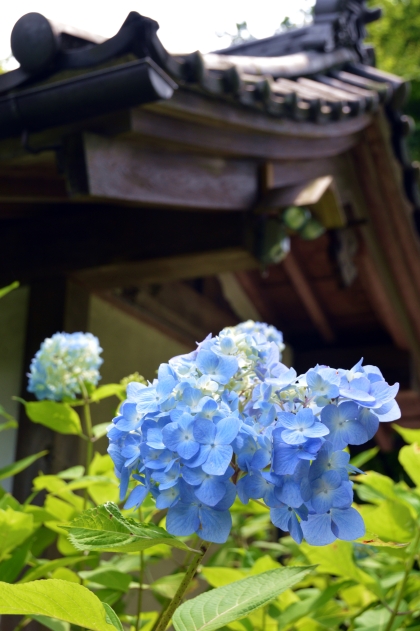

Dressing up for the occasion:

And then it’s time for tea:


Himeji Castle is really a castle that doesn’t mess around. It was built in part to rival Osaka castle and keep Central and Western Japan under control:

In the Meiji Period (1868 to 1912) Himeji Castle was to be torn down under the government policy but it was saved by a Colonel Nakamura Shigeto of the Army:

During WWII a bomb was dropped on the main tower, but miraculously, the bomb did not go off and the castle was not damaged:

And it also features these guys:

Construction on the main castle as seen today was completed in 1609, following the establishment of the central Edo shogunate, and it really is built to impress. This is the main entrance, built on a steep slope to deter attack:

The castle also features thick walls and winding labyrinthine paths to make it easier to defend. The fish ornaments on the roof were believed to protect against fire:

Some of the builders were obviously Christian and the lord of the castle at one time was Christian:

The walls also feature the crests of the various families that have owned Himeji Castle over the centuries:


The inside doesn’t really offer much in the way of exhibits – this was the gun rack:

It is really the most impressive castle in Japan and certain one of the most striking and beautiful in the world:
